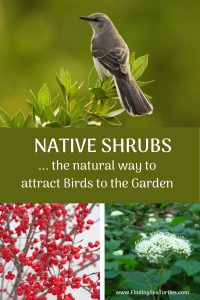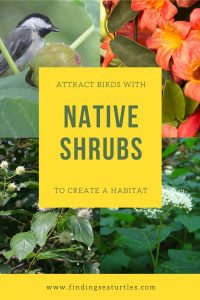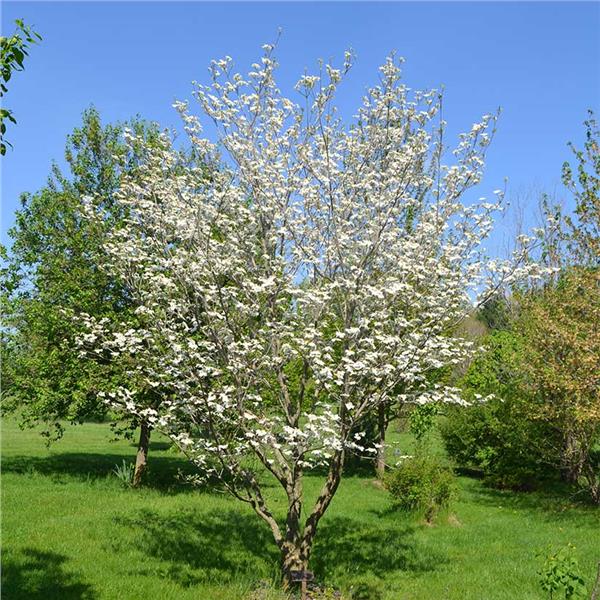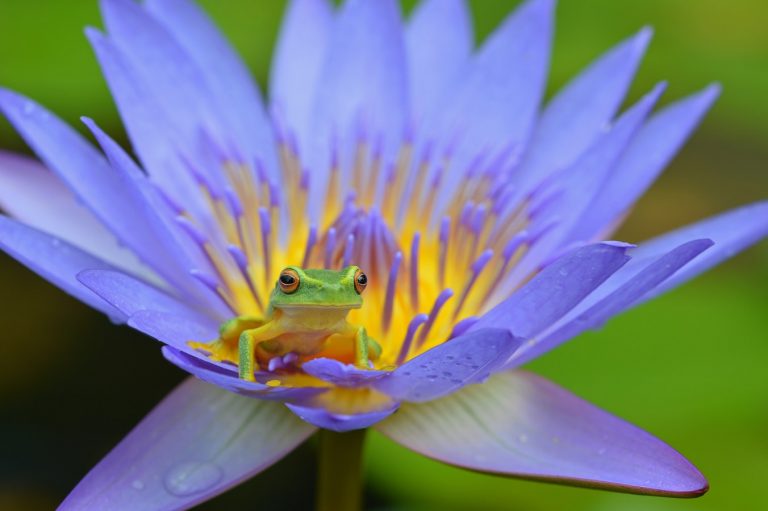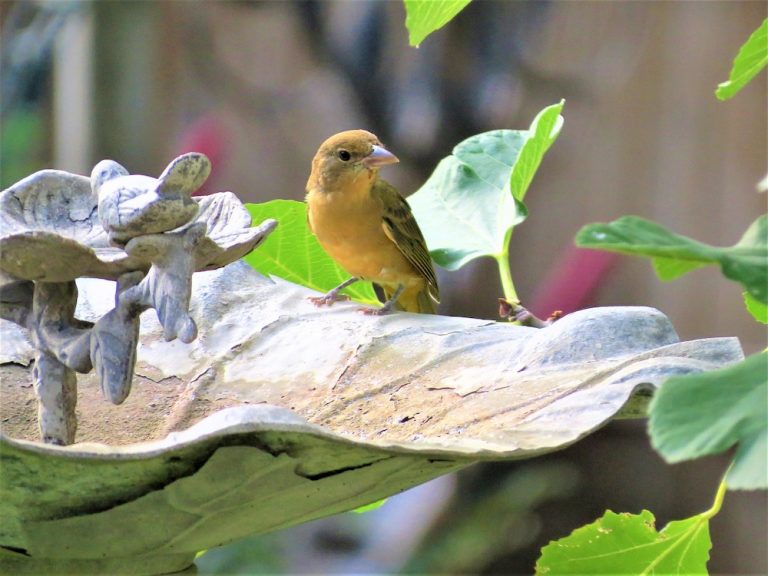Native Shrubs that Attract Birds
Plant native shrubs that attract birds. Going native in the garden to attract more wildlife. Native shrubs are a natural lure for birds as well as all wildlife. Birds naturally gravitate to native shrubs. And have the benefit of settling in quickly … since they are native to our habitat they tend to settle quickly once planted.

Take a look at our list of native shrubs that attract birds.
-
Common Buttonbush
Common Buttonbush Cephalanthus occidentalis
- Native
- Grows in zones 4 to 9
- Part shade and part sun to full Sun
- Reaches 12 feet tall by 8 feet wide
- Small white flowers in a dense, spherical cluster with protruding pistils
- Blooms June, July, and August
- Bee friendly that attracts birds and butterflies, including the swallowtail butterfly
- Resistant to deer
- Brown button-like fruit is consumed by waterfowl and shorebirds over the Winter
- Tolerant of wet soils, flood conditions and shallow standing water for short periods of time
- Tolerates loam, clay, limestone, and sandy soil conditions
- Plant in a rain garden or wetland
The Common Buttonbush shrub is also known as Button Willow. Part of the coffee family, Rubiaceae, this shrub grows in many of the 48 states however, not the Pacific Northwest. Buttonbush has a distinctive twisting trunk with crooked branches. An important native shrub that benefits a large number of Wildlife. Providing a food source year round to providing cover from predators and nesting opportunities.
A note of caution, the foliage is poisonous to livestock and other animals. So, be sure to plant in an environment where livestock and pets do not have access to. The flowers and fruit attract many pollinators and birds. A few of the birds that are attracted to the Buttonbush shrub are:
Blue Jays * Crows * Chickadees & Titmice * Cardinals & Grosbeaks * Finches * Mockingbirds & Thrashers * Nuthatches * Orioles * Sparrows * Thrushes * Vireos * Waxwings * Woodpeckers * Wood Warblers * Wrens
2. Ilex Berry Poppins

- Native
- Grows in zones 3-9
- Part shade and part Sun to full Sun
- Reaches 3 to 4 feet tall with a spread of 3 feet wide
- Small white blooms
- Blooms Spring into early Summer
- Attracts birds
- Tolerates clay, normal, loamy, and sandy soil conditions
- Tolerant of heat and humid weather conditions
- Resistant to disease and pest
A cold hardy female Winterberry Holly ornamental shrub. Blazing red berries for Autumn and Winter Wildlife feeding. The compact and heavily branched shrub blooms on new wood. Male pollinator is needed for best flowering and fruiting. The male pollinator for the female is called Ilex Mr Poppins Holly. Birds that frequently visit the Winterberry Holly are:
Blue Jays * Crows * Chickadees & Titmice * Cardinals & Grosbeaks * Mockingbirds & Thrashers * Nuthatches * Orioles * Sparrows * Thrushes * Vireos * Waxwings * Woodpeckers * Wood Warblers * Wrens
3. Viburnum Acerifolium
- Native
- Grows in zones 4 to 7
- Full shade to part shade and part Sun
- Reaching 4 to 6 feet tall and 3 to 4 in width
- Spring blooming creamy white clusters of flowers
- Bloom in Spring
- White blooms followed by red to blue-black berries
- Tolerates rocky, sandy, loamy, and clay soil conditions
- Attracts birds, butterflies, bees, and other nectar insects
As the Autumn months arrive, the maple shaped leaves turn burgundy with a purple gray color underneath. An excellent source of food and shelter for Wildlife. Birds that typically visit the viburnum shrub are:
Blue Jays * Crows * Chickadees & Titmice * Cardinals & Grosbeaks * Mockingbirds & Thrashers * Nuthatches * Orioles * Sparrows * Thrushes * Vireos * Waxwings * Woodpeckers * Wood Warblers * Wrens
4. Wild Hydrangea

Wild Hydrangea Hydrangea arborescens
- Native
- Grows in zones 4 to 9
- Shade to part shade and part Sun
- Reaches 4 to 6 feet tall
- Greenish-white dense, flat-topped clusters blooms
- Blooms from June to July
- Attracts birds
- Larval host for Hydrangea Sphinx moth
Some of the common names for Wild Hydrangea include Sevenbark, Smooth Hydrangea, and Tree Hydrangea. This shrub grows along ravine walls and slopes inside forest lands. Used by Cherokee and Southerns for herbal traditions. Some of the birds that you may see are:
Blue Jays * Crows * Chickadees & Titmice * Cardinals & Grosbeaks * Finches * Mockingbirds & Thrashers * Nuthatches * Orioles * Sparrows * Thrushes * Vireos * Waxwings * Woodpeckers * Wood Warblers * Wrens
5. American Hazelnut
American Hazelnut Corylus americana
- Native
- Grows in zones 4 to 8
- Part shade and part Sun to full Sun
- Reaches 6 to 15 feet tall
- Red blooms
- Blooms in April and May
- Edible nuts in late Summer
- Tolerates sandy, loam, and clay soil conditions
- Moisture: Dry, Medium, Moist
- Bee friendly shrub that attracts birds
- Serves as a host plant
In the Autumn months, the deep green leaves turn to copper reds and yellows. The American Hazelnut is a highly valued wildlife shrub producing nuts. Nuts are eaten by squirrels, foxes, deer, turkeys, woodpeckers, pheasants, as well as other wildlife. Foliage is browsed by rabbits and deer, with the branches providing cover and nesting sites for birds. Serves as a host for numerous caterpillars. Some of the typical birds that are seen at the American Hazelnut shrub are:
Blue Jays * Crows * Chickadees & Titmice * Cardinals & Grosbeaks * Finches * Mockingbirds & Thrashers * Nuthatches * Orioles * Sparrows * Thrushes * Vireos * Waxwings * Woodpeckers * Wood Warblers * Wrens
6. Spicebush
Spicebush Lindera benzoin
- Native
- Grows in shade to part shade and part Sun
- Reaches 15 feet
- Tiny, pale yellow cluster of blooms
- Blooms April and May
- Glossy red fruit develops after the blooms
- Attracts insects, butterflies, and birds
- Resistant to deer
- Fragrant leaves
- Tolerant of shade
- Serves as a larval host for several butterfly species
Known by other names including Northern Spicebush, Common Spicebush, and Wild Allspice, the Spicebush shrub is an important food source. The leaves feed the Spicebush and Swallowtail caterpillars. Ornamental ripe red berries feed migratory birds as they journey across the country. Birds that typically are seen by the Spicebush are:
Blue Jays * Crows * Chickadees & Titmice * Cardinals & Grosbeaks * Mockingbirds & Thrashers * Nuthatches * Orioles * Sparrows * Thrushes * Vireos * Waxwings * Woodpeckers Wood Warblers * Wrens
7. Tangerine Beauty Crossvine

Tangerine Beauty Crossvine Bignonia capreolata
- Native
- Grows in zones 6 to 9
- Full Sun
- Reaches 10 to 20 feet tall by 10 to 20 feet wide
- Fragrant trumpet-shaped orange red flowers
- Blooms in the Spring and Summer
- Attracts butterflies, birds, and hummingbirds
A climbing woody vine with orange-red trumpet shaped flowers. Attracts wildlife especially hummingbirds. Plant butterfly bush, coneflower, milkweed, bee balm, and salvia as companions to crossvine. Birds that frequently visit Tangerine Beauty Crossvine are hummingbirds.
8. Flowering Dogwood
Flowering Dogwood Cornus florida
- Native
- Grows in zones 5 to 9
- Part shade and part Sun to full Sun
- Reaches 20 to 25 feet
- White flowers
- Blooms in the Spring
- Attracts birds
- Tolerates acidic, clay, loamy, moist, rich, and sandy soil conditions
A native berry producing tree that attracts many forms of wildlife. Provides multi-seasonal garden interest. White blooms during the Spring to Autumn reddish purple foliage to Winter berries. Winter songbirds love the red berry fruit. The dogwood tree has immense wildlife value. Berry fruit is eaten by ruffed grouse, bobwhite quail, wild turkey, and other birds. Birds that you may see at the White Dogwood Tree are:
Blue Jays * Crows * Chickadees & Titmice * Cardinals & Grosbeaks * Mockingbirds & Thrashers * Nuthatches * Orioles * Sparrows * Thrushes * Vireos * Waxwings * Woodpeckers * Wood Warblers * Wrens
This ends our list of native shrubs that attract birds. For best results, be sure to include native plants that bloom all three seasons. A pollinator garden is more effective when there are food sources year round for wildlife. Pollinator gardening is a year round effort to keep birds and other wildlife not only fed but protected from predators.
Finally, we hope that you try one of these native shrubs in your garden. With native plants you have the benefit of attracting many birds and wildlife that not only visit the pollinator garden but even move in permanently.
Interested in gardening for pollinators? If you found this helpful . . .
You May Also Enjoy some of our other pollinator gardening related posts.
Native Plants that Attract Birds
Plants that Attract Monarch Butterflies
Host Plants for Monarch Butterflies
15 Bee Friendly Perennials to Make Your Garden Buzz
And if you have any questions, feel free to reach out to us. We always are ready to help you out. Thank you for dropping by.
Mary
Pin this for Later:
